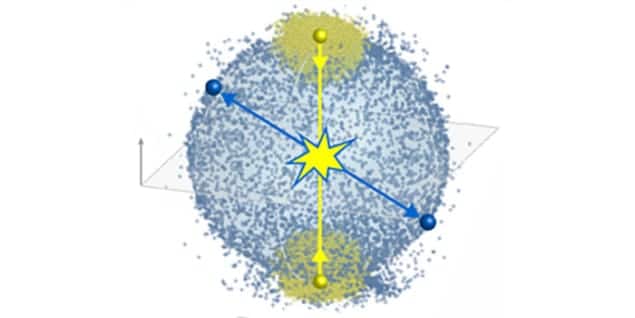
A “momentum microscope” that can fully characterize a quantum many-body system has been unveiled by physicists in Australia. The device was demonstrated by measuring correlations between ultracold atoms and could provide insights into tricky many-body problems, such as high-temperature superconductvity.
A many-body quantum system containing a lot of particles can be fully characterized by measuring all correlations between particles in the system. While this is extremely difficult to do in practice, a very good characterization can sometimes be achieved by using a specific set of correlations between just a few particles.
One million atoms
Sean Hodgman of the Australian National University and colleagues have achieved such a characterization by colliding two Bose–Einstein condensates (BECs), which are ensembles of ultracold atoms all in one quantum state. In this experiment, about one million helium atoms were used to make both BECs.
After the BECs collide, the team measures the momenta of atoms by tracking their positions as a function of time. This information is then used to calculate the correlations between the momenta of pairs and triplets of atoms in the halo of atoms created by the collision.
Pairing field
The measurements also allowed the team to calculate the “pairing-field amplitude” for the system – which they describe as a key building block for working out the higher-order correlations in the system. Indeed, the team has calculated that the measurements provide enough information to fully characterize the halo as a many-body system.
The technique, which is described in Physical Review Letters, could provide insights into poorly understood highly correlated systems such as high-temperature superconductors. It could also help physicists understand exotic phenomena such as many-body localization, glassy dynamics and Efimov resonances.



